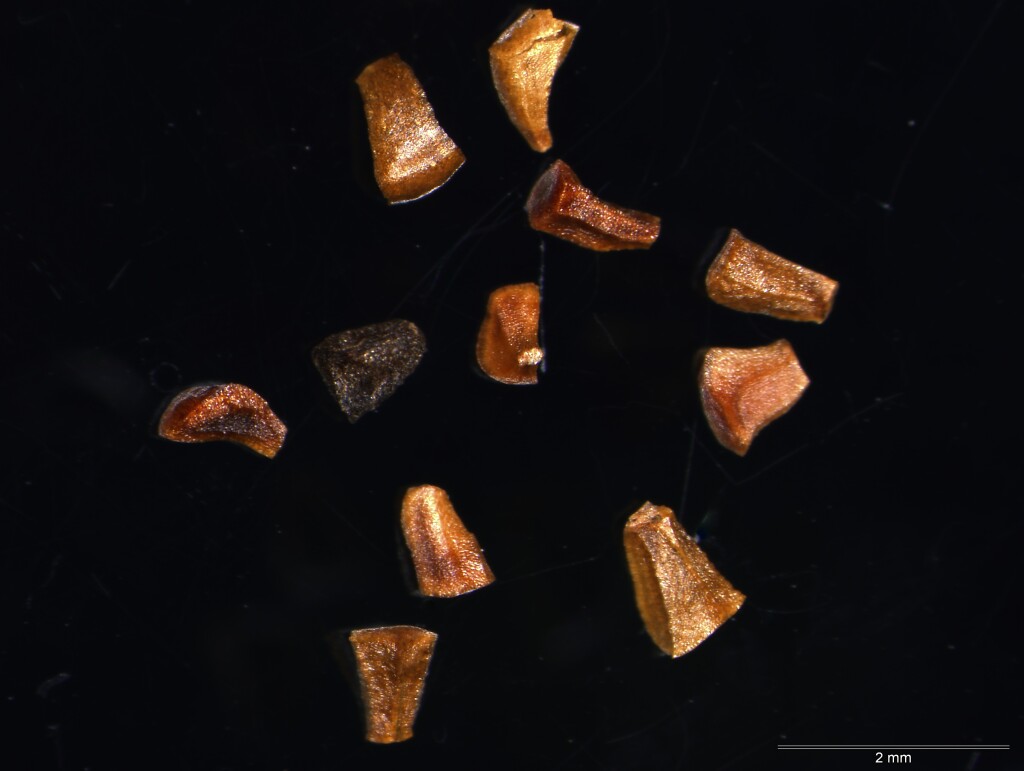Eucalyptus tereticornis subsp. mediana
Brooker & SleeTrees to 20 m tall; bark smooth, mottled, shedding at intervals throughout the year showing white, yellow and grey, becoming roughened at base. Juvenile leaves petiolate, soon alternate, broadly ovate to ovate, to 11 cm long, 6 cm wide, dull, green, margins often undulate; adult leaves petiolate, alternate, lanceolate, 8–17 cm long, 1–3 cm wide, concolorous, dull, green; reticulation dense, oil glands numerous, island. Inflorescence axillary, unbranched; peduncles to 1 cm long, 7-flowered; buds almost sessile to pedicellate, hypanthium hemispherical; operculum longer than hypanthium, obesely conical, to 1.6 cm long, 0.8 cm diam., scar present; stamens all erect or inner ones inflexed; anthers dorsifixed, cuneate; ovules in 6 vertical rows; flowers white. Fruit subsessile to shortly pedicellate, hypanthium hemispherical, to 1 cm long, 0.6 cm diam.; disc steeply ascending; valves 4 or 5, strongly exserted; seed cuboid, yellow and smooth, or black, pitted and toothed, or patchily yellow and black, or a mixture of all three forms, hilum terminal. Flowers spring.
GipP, EGL, EGU, HSF. In Gippsland, forms attributed to this taxon have isolated occurrences on the Snowy River, with its main distribution west from the Tambo River valley to Sale and Macalister River valley at Licola. It grows on riverbanks, wetlands, and plains and low hills away from streams. Once common in this area but widely cleared and now with remnants in poor health.
Distinguished from E. camaldulensis by the longer, fatter, non-rostrate buds; seed colour is an unreliable character for separating these two taxa east of the Latrobe River. Intergrades occur, e.g. Mitchell River near Bairnsdale.
Presumed hybrids with E. globulus subsp. pseudoglobulus have been recorded near Metung (see E. ×paradoxa).
 Spinning
Spinning
